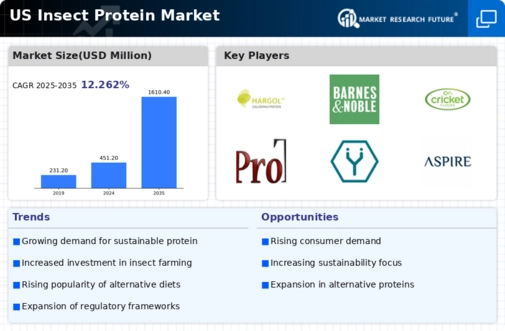The US Insect Protein Market is witnessing robust growth driven by rising consumer interest in sustainable food sources and protein alternatives. This burgeoning market is characterized by increasing investments in research and development, as companies strive to develop innovative products made from insect protein. The demand for sustainable proteins has prompted various stakeholders, including entrepreneurs and established food industry players, to explore the potential of insects as a highly nutritious and environmentally friendly source of protein.
The competitive landscape is vibrant, with numerous startups and companies exploring niche opportunities within the market, each adopting unique strategies to cater to the growing consumer base. With an increasing number of products entering the market, the focus on education and consumer acceptance remains pivotal for driving growth and acceptance in the insect protein segment.
Hargol FoodTech is positioned as a significant player in the US insect protein market, leveraging its expertise in large-scale insect farming to deliver high-quality products. The company emphasizes sustainability and innovation in its business model, aiming to meet the growing consumer demand for eco-friendly protein sources. With a strong emphasis on quality control and production efficiency, Hargol FoodTech has established itself as a trusted name in the industry. Their operations showcase state-of-the-art farming techniques that not only minimize environmental impact but also maximize yield potential, allowing them to effectively compete with traditional protein sources.
The company's commitment to research and development sets it apart, as it continuously seeks to improve product offerings and increase awareness surrounding the nutritional benefits of insect protein within the US market.
Bitty Foods has carved a niche for itself in the US insect protein market by focusing on the development of innovative food products that incorporate insect protein into familiar forms. The company specializes in creating snacks and baking ingredients, making insect protein more accessible to mainstream consumers. Bitty Foods' product line, which includes items like protein-rich snacks, showcases the versatility of insect protein while highlighting its sustainability and nutritional advantages. The brand has successfully penetrated various retail channels, with increased market presence driven by partnerships and collaborations aimed at expanding their distribution network.
Bitty Foods’ strengths lie in its marketing strategies that highlight the health and sustainability aspects of insect protein, appealing to health-conscious consumers. The company has also engaged in collaborations and potential mergers to enhance its market footprint, striving to position itself as a leader in the burgeoning market of insect-based foods within the US.

















